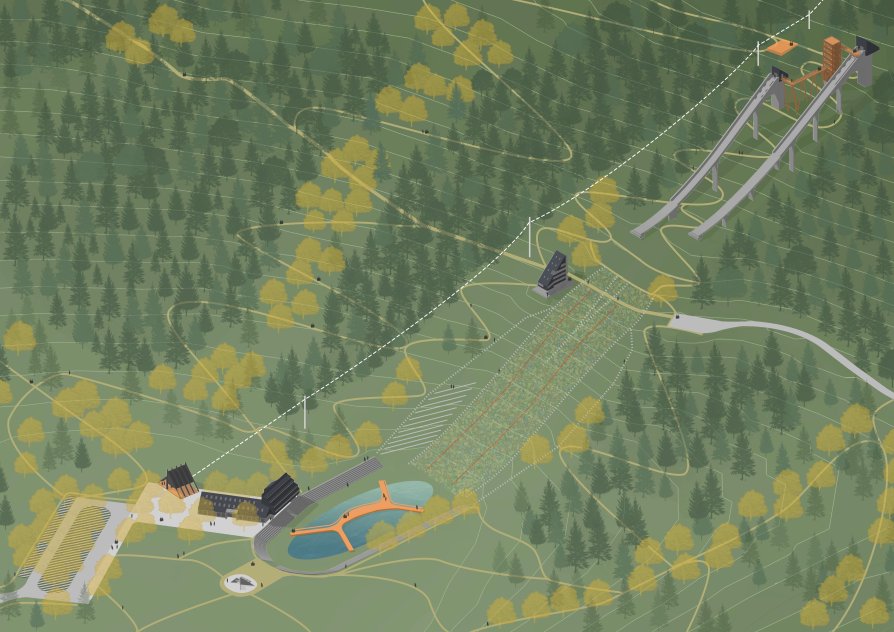Final projects

RECULTIVATION OF THE OLYMPIC LANDSCAPE OF SARAJEVO SKI JUMPS
, MA diploma project

Annotation
The subject of this diploma thesis is the revitalization of the Olympic landscape in the Malo Polje area on Mount Igman in Bosnia and Herzegovina, where ski jumping competitions took place during the 1984 Winter Olympic Games hosted by Sarajevo. The ski jumps, built specifically for the event, now stand as a striking yet neglected symbol of both glory and tragedy. The Malo Polje area is marked not only by its Olympic history but also by the war events of the 1990s, which abruptly interrupted its development. Despite its remarkable cultural, natural, and recreational potential, the area still lacks a coherent vision for its future use. Mount Igman is a landscape of ecological value, rich in biodiversity, and serves as a major recreational area for the citizens of Sarajevo. In both summer and winter months, it offers refuge from the urban environment and stands as a silent witness to the regions historical turning points. This thesis proposes a conceptual approach called ReCircle Igman Olympic Park, aimed at regenerating the site by interweaving ecological restoration, cultural identity, and contemporary use. The concept is structured around five thematic components symbolizing the Olympic rings: flora and fauna, water in the landscape, Olympic structures, sustainable energy, and the circulation network. The design incorporates principles of landscape recovery, adaptive reuse of structures, ecological enhancement, and non-motorized mobility. Emphasis is placed on finding a balance between the memory of the site and its new role in todays context. The goal is to create a space where nature, history, and the present coexist in harmony. Igman becomes not only a place of remembrance, but also an opportunity to establish a new type of public space peaceful, inclusive, and open to all. This landscape design does not offer a universal solution, but rather an example of how landscape architecture can contribute to finding a balance between the human footprint and ecological processes. I hope it will raise awareness, at least for some, about the current state of the site and the challenges it faces, ranging from environmental issues to the underused social and spatial potential of the area. The world we live in is changing. The climate is shifting, landscapes are transforming, values are evolving, and so is the way we move through space. It is our responsibility not to resist these changes, but to understand them, respond to them, and seek within them opportunities, not only for protecting nature, but also for restoring the relationship between people and the landscape.
